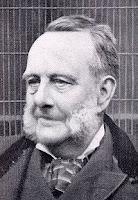Planning worship?
Check out our sister site, ZeteoSearch.org,
for 20+ additional resources related to your search.
- |
User Links
Search Results
Hasten, sinner! to be wise
Meter: 7.7.7.7 Appears in 549 hymnals Topics: Ash Wednesday and Lent Used With Tune: FERRIER
Hasten, sinner! to be wise
TELEMANN'S CHANT
Appears in 19 hymnals Composer and/or Arranger: Zeuner Tune Key: E Flat Major Incipit: 11135 65111 75645 Used With Text: Hasten, sinner, to be wise
TELEMANN'S CHANT
SPANISH HYMN
Appears in 569 hymnals Tune Sources: Spanish Melody Incipit: 17161 53142 17117 Used With Text: Hasten, sinner! to be wise
SPANISH HYMN
PLEYEL'S HYMN
Appears in 645 hymnals Composer and/or Arranger: Ignace Pleyel Incipit: 35234 23352 34212 Used With Text: Hasten, sinner, to be wise!
PLEYEL'S HYMN
Hasten, O Sinner, To Be Wise
Author: Thomas Scott Hymnal: American Lutheran Hymnal #26 (1930) Meter: 8.8.8.8 Lyrics: 1 Hasten, O sinner, to be wise,
And stay not for the morrow’s sun;
The longer wisdom you despise,
The harder is she to be won.
2 O hasten mercy to implore,
And stay not for the morrow’s sun,
For fear thy season should be o’er
Before this evening’s course be run.
3 Hasten, O sinner, to return,
And stay not for the morrow’s sun,
For fear thy lamp should fail to burn
Before the needful work is done.
4 Hasten, O sinner, to be blest,
And stay not for the morrow’s sun,
For fear the curse should thee arrest
Before the morrow is begun.
Amen. Topics: Invitation Languages: English Tune Title: MALVERN
Hasten, O Sinner, To Be Wise
Hasten, Sinner, to Be Wise
Author: Thomas Scott Hymnal: The Cyber Hymnal #2623 Meter: 7.7.7.7 Lyrics: 1. Hasten, sinner, to be wise!
Stay not for the morrow’s sun:
Wisdom if you still despise,
Harder is it to be won.
2. Hasten, mercy, to implore!
Stay not for the morrow’s sun,
Lest thy season should be o’er,
Ere this evening’s stage be run.
3. Hasten, sinner, to return!
Stay not for the morrow’s sun,
Lest thy lamp should fail to burn
Ere salvation’s work is done.
4. Hasten, sinner, to be blest!
Stay not for the morrow’s sun,
Lest perdition thee arrest,
Ere the morrow is begun. Languages: English Tune Title: PLEYEL'S HYMN
Hasten, Sinner, to Be Wise
Hasten, Sinner, to be Wise
Author: Thomas Scott Hymnal: Songs of Faith and Hope Number 2 #48 (1909) Tune Title: [Hasten, sinner, to be wise]
Hasten, Sinner, to be Wise
Richard Redhead

1820 - 1901 Person Name: R. Redhead Composer of "MANTON" in The National Baptist Hymnal Richard Redhead (b. Harrow, Middlesex, England, 1820; d. Hellingley, Sussex, England, 1901) was a chorister at Magdalen College, Oxford. At age nineteen he was invited to become organist at Margaret Chapel (later All Saints Church), London. Greatly influencing the musical tradition of the church, he remained in that position for twenty-five years as organist and an excellent trainer of the boys' choirs. Redhead and the church's rector, Frederick Oakeley, were strongly committed to the Oxford Movement, which favored the introduction of Roman elements into Anglican worship. Together they produced the first Anglican plainsong psalter, Laudes Diurnae (1843). Redhead spent the latter part of his career as organist at St. Mary Magdalene Church in Paddington (1864-1894).
Bert Polman
Richard Redhead
William B. Bradbury

1816 - 1868 Person Name: W. B. Bradbury (1816-1868) Composer of "ZEPHYR" in Hymns of the Ages William Batchelder Bradbury USA 1816-1868. Born at York, ME, he was raised on his father's farm, with rainy days spent in a shoe-shop, the custom in those days. He loved music and spent spare hours practicing any music he could find. In 1830 the family moved to Boston, where he first saw and heard an organ and piano, and other instruments. He became an organist at 15. He attended Dr. Lowell Mason's singing classes, and later sang in the Bowdoin Street church choir. Dr. Mason became a good friend. He made $100/yr playing the organ, and was still in Dr. Mason's choir. Dr. Mason gave him a chance to teach singing in Machias, ME, which he accepted. He returned to Boston the following year to marry Adra Esther Fessenden in 1838, then relocated to Saint John, New Brunswick. Where his efforts were not much appreciated, so he returned to Boston. He was offered charge of music and organ at the First Baptist Church of Brooklyn. That led to similar work at the Baptist Tabernacle, New York City, where he also started a singing class. That started singing schools in various parts of the city, and eventually resulted in music festivals, held at the Broadway Tabernacle, a prominent city event. He conducted a 1000 children choir there, which resulted in music being taught as regular study in public schools of the city. He began writing music and publishing it. In 1847 he went with his wife to Europe to study with some of the music masters in London and also Germany. He attended Mendelssohn funeral while there. He went to Switzerland before returning to the states, and upon returning, commenced teaching, conducting conventions, composing, and editing music books. In 1851, with his brother, Edward, he began manufacturring Bradbury pianos, which became popular. Also, he had a small office in one of his warehouses in New York and often went there to spend time in private devotions. As a professor, he edited 59 books of sacred and secular music, much of which he wrote. He attended the Presbyterian church in Bloomfield, NJ, for many years later in life. He contracted tuberculosis the last two years of his life.
John Perry
William B. Bradbury
Ignaz Pleyel
1757 - 1831 Person Name: Ignaz Joseph Pleyel Composer of "PLEYEL'S HYMN" in The Cyber Hymnal Ignaz Joseph Pleyel; b. Ruppertstahl, near Vienna, 1757; d. Parice France, 1831
Evangelical Lutheran Hymnal, 1908
Ignaz Pleyel


 My Starred Hymns
My Starred Hymns

